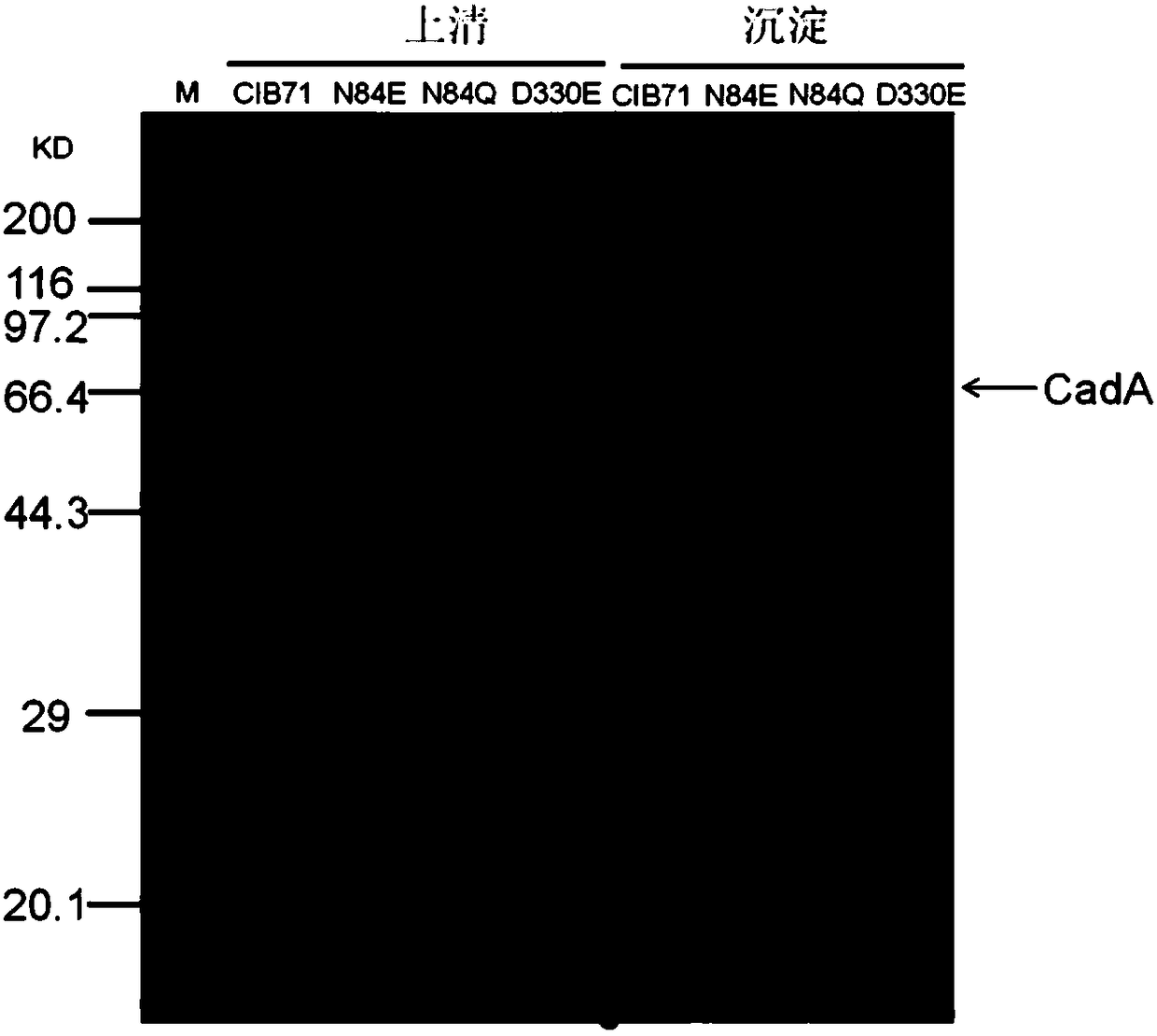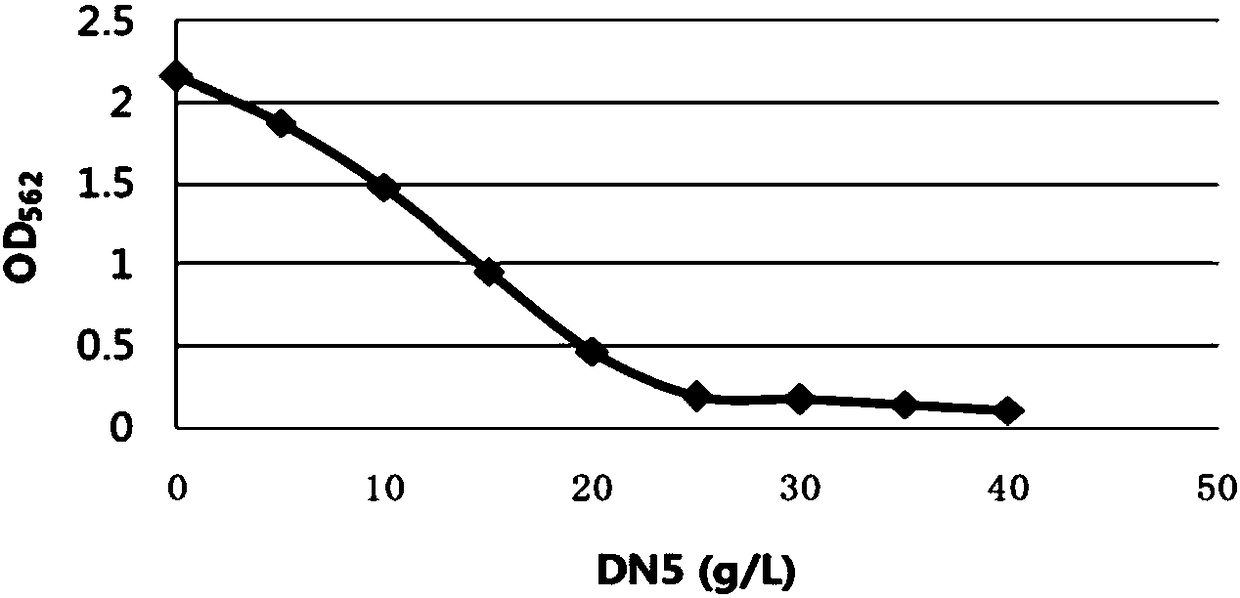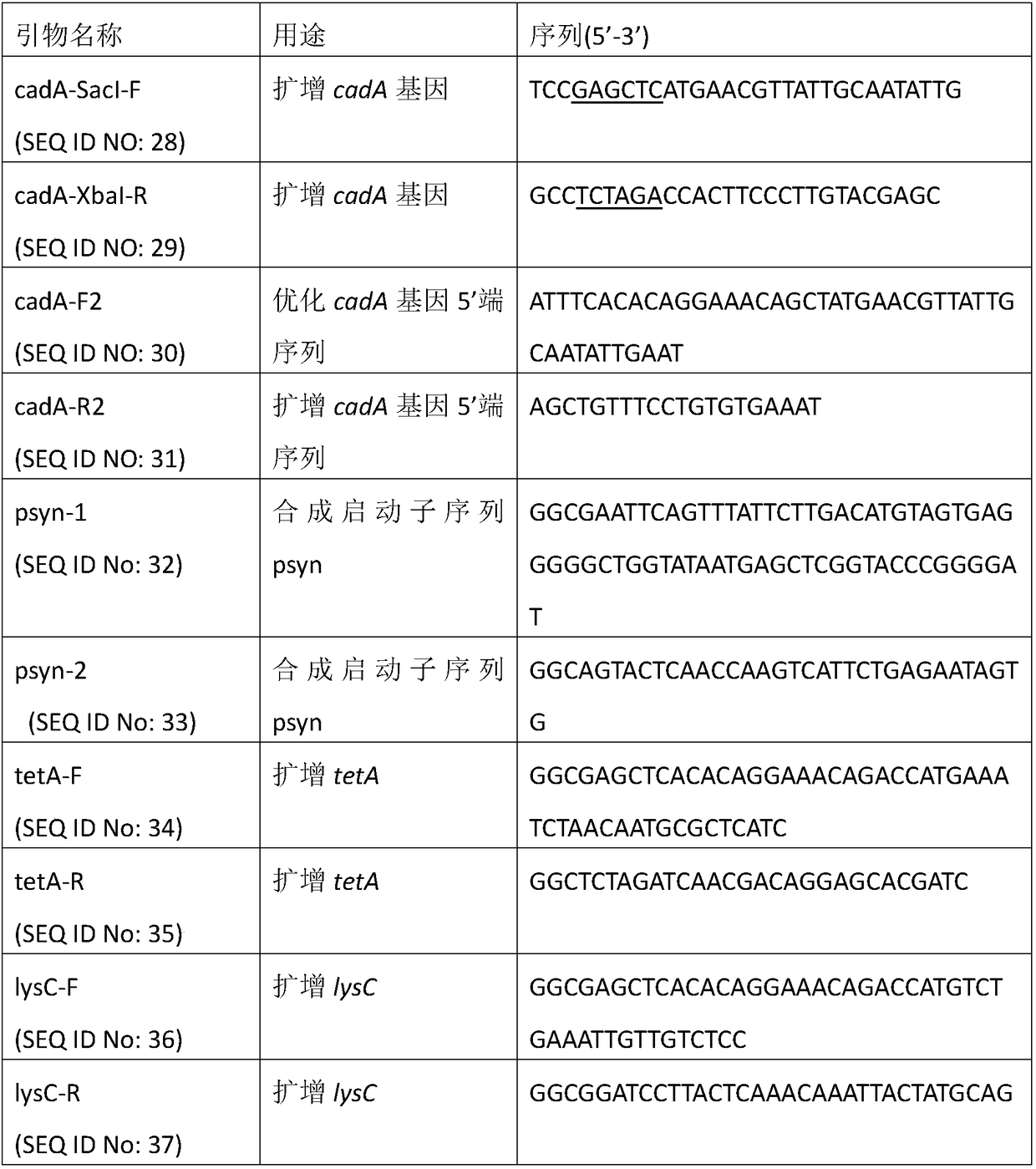Lysine decarboxylase mutant and application thereof
A technology of lysine decarboxylase and mutants, applied in the field of one-step production of 1,5-pentanediamine from glucose, which can solve problems such as leakage expression, bacterial toxicity, and inhibition of bacterial growth
- Summary
- Abstract
- Description
- Claims
- Application Information
AI Technical Summary
Problems solved by technology
Method used
Image
Examples
Embodiment 1
[0069] Cloning of lysine decarboxylase gene cadA
[0070] Using primers cadA-SacI-F and cadA-XbaI-R (primers shown in Table 1), the lysine decarboxylase (SEQ ID No: 1) encoding gene cadA (SEQ ID No: 2) was extracted from E. coli MG1655K12 (E. coli MG1655K12, purchased from Beijing Tianenze Biotechnology Co., Ltd.) was amplified from the genome, after double digestion with SacI and XbaI, connected to the same double digested pUC18 plasmid (purchased from Bao Bioengineering (Dalian) Co., Ltd.) in. Use CaCl 2 The competent cells were prepared by the method, and the ligation product was transformed into E.coli BL21 (purchased from Bao Bioengineering (Dalian) Co., Ltd.) cells by the heat shock method. The LB medium was added with ampicillin antibiotics for screening, clone PCR and sequencing After the verification is correct (verification of the CadA sequence is correct), the plasmid is extracted to obtain the pCIB60 plasmid.
[0071] Using the plasmid pCIB60 as a template, the 5'sequ...
Embodiment 2
[0077] Construction and screening of error-prone PCR mutation library of lysine decarboxylase gene CadA
[0078] Using the plasmid pCIB71 constructed in Example 1 as a template, primers cadA-SacI-F and cadA-Xbal-R and GeneMorph II Random Mutagenesis error-prone PCR kit (purchased from Agilent Technologies (China) Co., Ltd.), according to the Instructions for use of the kit: Randomly mutate the cadA gene and introduce restriction sites at both ends of the gene. Using this kit can ensure that the four bases A / T / C / G are mutated at equal frequency, and only need By changing the initial amount of target DNA in the reaction or the number of PCR cycles, the average number of point mutations in each gene in the obtained PCR product is controlled. In this example, by using a higher amount of initial target DNA (450ng) and fewer PCR cycles (20 times), it is possible to control 1-2 nucleotide mutations in each gene, thereby controlling the frequency of amino acid mutations. In order to hav...
Embodiment 3
[0092] Screening results of error-prone PCR mutant library of lysine decarboxylase CadA and identification of mutation sites by sequencing
[0093] The constructed CadA error-prone PCR mutant library was initially screened. Of the 2000 clones, 31 out of the 96-well deep-well plates were judged to be false positive clones; the remaining 1969 clones were screened as 19 clones with color changes. Significantly weaker than the control strain. The 19 clones were re-screened twice (the re-screening method is the same as the initial screening). After re-screening, it was determined that 4 clones had significantly lower lysine decarboxylase activity than the control pCIB71.
[0094] These 4 clones were further inoculated into 5ml LB liquid medium (containing 100μg / ml ampicillin) for cultivation, 37 degrees Celsius, 250rpm (the instrument was purchased from Shanghai Shiping Experimental Equipment Co., Ltd., an extraordinary small-capacity full-temperature constant-temperature culture oscil...
PUM
 Login to View More
Login to View More Abstract
Description
Claims
Application Information
 Login to View More
Login to View More - R&D
- Intellectual Property
- Life Sciences
- Materials
- Tech Scout
- Unparalleled Data Quality
- Higher Quality Content
- 60% Fewer Hallucinations
Browse by: Latest US Patents, China's latest patents, Technical Efficacy Thesaurus, Application Domain, Technology Topic, Popular Technical Reports.
© 2025 PatSnap. All rights reserved.Legal|Privacy policy|Modern Slavery Act Transparency Statement|Sitemap|About US| Contact US: help@patsnap.com



